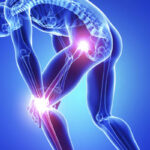Baby Basics Holding No matter how well prepared you think you are for your baby’s arrival, the reality always seems to be different from the theory! On the off chance that you’re panicked, you will drop, break, or in any case, hurt your valuable infant, you’re following after some admirable people – truth be told, guardians who don’t stress are exempt! This section will boost your confidence.

This Way Up: Picking Up Your Baby
Baby Basics: Holding, Bathing, and Keeping Warm, pumping breast milk product storage supply, feeding breast milk drying up, increasing breast milk supply, Avent isis breast pump manual, feeding baby milk, baby solids, weaning breastfeeding, mom breastfeeding benefits information supplies, nursing, and feeding, health facts chocolate, childhood immunization schedule, childhood immunizations.
The first few attempts at picking up a new baby can be nerve-wracking, but you’ll soon be able to do it with your eyes shut (although we wouldn’t recommend this!). You don’t so much pick up as scoop a baby. Arrange your hands and arms around him while he’s still supported by his mattress, and put one hand under his head. Once you’ve got him in your arms, the easiest way to carry a new baby is either against your chest in an upright position or with his head in the crook of one of your arms and the rest of his body lying in the lower part of your arm.
Your baby won’t break, honest! Vulnerable and fragile though he may look, he’s actually a good deal more robust than you may think. Just remember the one golden rule: Never let his head flop. Your baby has no neck control at all at birth and doesn’t develop any for at least six weeks. Don’t let his limbs dangle, either: Just like any of us, he’ll feel insecure left hanging in limbo.

Making Sure He’s Not Too Hot Or Cold
Baby Basics: Holding, Bathing, and Keeping Warm, pumping breast milk product storage supply, feeding breast milk drying up, increasing breast milk supply, Avent isis breast pump manual, feeding baby milk, baby solids, weaning breastfeeding, mom breastfeeding benefits information supplies, nursing, and feeding, health facts chocolate, childhood immunization schedule, childhood immunizations.
Your baby’s body is not mature enough to regulate its own temperature very well. He can’t sweat properly if he gets too hot, so you’ll need to be extra sensitive to his body temperature. Being too hot can increase the risk of Sudden Infant Death Syndrome (SIDS, or cot death). These days, babies are much more likely to be too hot than too cold, but being very cold can cause problems with your baby’s heart and circulation.
The best way of telling whether he’s too hot or cold is to do it the way your granny used to: Feel the back of his neck or tummy. Don’t feel his hands or feet: They won’t give an accurate indication of his temperature, as they’re usually cooler than the rest of his body.
As a rule, your baby will feel warm. If he’s hot, damp, or sweaty, then he has too many clothes on – Remove a layer of his blankets or clothing to help him too cool – so add a layer.
Always strip off your baby’s outdoor clothes and hat when you come in to a warm atmosphere from a cold one, even if you have to wake him up to do so: Overheating can be very dangerous to young babies.
Buy a room thermometer for your baby’s bedroom. The ideal room temperature for a baby is around 18C (65F). This may feel a bit chilly to you, but if your baby’s wearing a vest and body suit and has a sheet and a couple of blankets, then he’ll be plenty warm enough. A room temperature between 16 and 20C (60 to 68F) is acceptable.

Keeping Your Baby Clean
Baby Basics: Holding, Bathing, and Keeping Warm, pumping breast milk product storage supply, feeding breast milk drying up, increasing breast milk supply, Avent isis breast pump manual, feeding baby milk, baby solids, weaning breastfeeding, mom breastfeeding benefits information supplies, nursing, and feeding, health facts chocolate, childhood immunization schedule, childhood immunizations.
New babies don’t get very dirty, so they don’t need a lot of washing. Make the most of this stage! A daily bath for your newborn is unnecessary because too much water can dry out your baby’s skin. You’ll be fine simply washing his face and bottom and any other bits, such as his hands and under his arms, that need sprucing up a little. For ‘topping and tailing’ all you need is a clean towel, a bowl of warm (never hot) water, and some cotton wool. Lay him on a changing table, a mat, or a towel, or sit him on your lap. Keep your child’s head and body upheld consistently except if he’s lying on a mat or towel on the floor (your child can’t hold his head up yet).
Utilize a new piece of cotton fleece for each body part, to try not to spread any microorganisms on the skin. Wash the private parts from front to back, to try not to spread microorganisms from the skin around the base.
If you’re bathing your baby, wash his face before you put him in the baby bath by dipping a clean piece of cotton wool in warm water and wiping gently around his eyes, moving out from the nose. Never use soap on your baby’s face. Also, wash his bottom before you put him in the bath if he’s produced anything more than wee!
Never use a cotton bud in your baby’s ears – or yours for that matter! The lining of the ears is very sensitive, and putting anything into them can damage the lining and cause inflammation and ear infections. For more interesting information visit our site.
You May Also Like:- Blotches, Spots, And All Caring For Your Baby’s Brand New Skin



